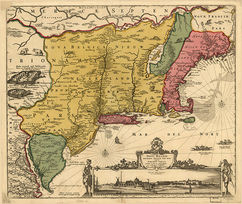-- Real Estate - History and Development
|
* Home
* History * Population * Government * Politics * Lobbyists * Taxes * State Symbols * Biographies * Economy * Employers * Real Estate * Education * Recreation * Restaurants * Hotels * Health * Environment * Stadiums/Teams * Theaters * Historic Villages * Historic homes * Battlefields/Military * Lighthouses * Art Museums * History Museums * Wildlife * Climate * Zoos/Aquariums * Beaches * National Parks * State Parks * Amusement Parks * Waterparks * Swimming holes * Arboretums More... * Gallery of images and videos * Fast Facts on key topics * Timeline of dates and events * Anthology of quotes, comments and jokes * Links to other resources |
|
|
|
-- Local property tax
The local property tax can first be traced to 1670, when a levy of one half penny per acre of land was imposed for the support of the colonial government. Until the middle of the 19th Century, property taxes were levied on real estate and certain personal property at arbitrary rates within certain limits, referred to as “certainties.” The Public Laws of 1851 sought to implement a more uniform system of assessments based on actual value and a general property tax, with all property classes treated the same for the purpose of taxation. In 1875 the concept of uniform assessments was incorporated in the State Constitution, but subsequent judicial decisions held that the amendment, however, permitted the classification of property for tax purpose and the exemption of certain property classes from taxation. These court rulings led to a period of the erosion of the “general property tax” concept. In 1884, a State Board of Assessors was created to assess the value of railroad and canal property. The State, thereby, inserted itself into the local property tax assessment process. -- Suburban development With the proliferation of the automobile in the 1920s, New Jersey's population quickly decentralized into suburbs along main highways. The Garden State Parkway was constructed between 1946 and 1957 to connect suburban northern New Jersey with resort areas along the coast and alleviate traffic on traditional north–south routes. The New Jersey Turnpike opened in 1952, spurring development from the Meadowlands at Exits 15, 15A and 16, to Port Newark/ Elizabeth between Exits 10 and 15, to Central New Jersey at Exits 8A, 8, 7A and 7. The Atlantic City Expressway, which was planned as a parkway in 1930s to connect Philadelphia with Atlantic City, but did not see substantial progress until the enactment in in 1962 of the New Jersey Expressway Authority Act creating a state agency to issue bonds, with construction in phases completed in the middle of the decade. In 1991, the South Jersey Transportation Authority was established to coordinate the different transportation modes by operating the Atlantic City Expressway, the Atlantic City International Airport, and rail and bus service. These developments, along with the construction of the interstate highway system in the 1960s and 1970s, supported development s in commercial real estate. The typical office was freed from partitions, and management was no longer ensconced in executive suites. Hartz Mountain ventured beyond its successful pet care business into real estate development with the building of a large speculative industrial distribution facility in Bayonne. The Hackensack Meadowlands Development Commission was created in 1969. Manufacturing and industrial jobs began to decline, and state government agencies began leasing office space in Trenton and the surrounding suburbs. Cali Associates (destined to become Mack-Cali) built its first office building in Cranford. |

